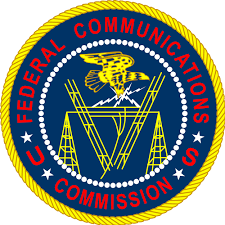- About
- Members
- Sponsors
- Subcommittees
- Technical Documents
- News
- Events
- Spotlight ATSC 3.0
- Contact Us
- Member Login
- Member Meetings
- Advanced Search
Search Site
Member Links
- About
- Members
- Sponsors
- Subcommittees
- Technical Documents
- News
- Events
- Spotlight ATSC 3.0
- Contact Us
- Member Login
- Member Meetings
- Advanced Search
NEWSFLASH: FCC Begins Accepting ATSC 3.0 Applications
Posted on June 4, 2019 in ATSC News
By Phil Kurz
On May 28, the FCC began accepting licensing applications for Next-Gen TV service via its Licensing and Management System (LMS). This development follows the commission’s completion of a revision to its Form 2100 and changes to LMS to deal with updates to accommodate ATSC 3.0 license applications.
The application must be filed by all full- and low-power TV stations, Class A and TV translator stations –except for licensed channel sharing stations—that intend to transmit 3.0. Stations currently on air with 3.0 service are operating under Experimental Special Temporary Authority (STA) granted by the agency.
The new licensing form and procedure will need to be used going forward by stations voluntarily adopting Next-Gen TV service, including those operating under an experimental STA. Those stations must file a Next-Gen TV license application in LMS no later than the expiration date of their experimental authorization, the agency said.
FCC Streamlines the Process
According to the agency, the 3.0 licensing procedure requires a single step, which is intended to streamline the process when compared to the traditional broadcast licensing process. Broadcasters wishing to transmit 3.0 from their authorized facilities or those of other broadcasters need simply to file a modification of license application with the commission.
The FCC’s public notice lays out several actions a station may not take until it has filed a Next-Gen TV license application and received approval from the agency. They include moving 1.0 simulcast signal to a temporary 1.0 simulcast host station, launching 3.0 transmissions on a 3.0 host station already converted to 3.0 and several other restrictions.
Broadcasters filing an application must select from one of six options tailored to their reason for filing. They include:
- Converting an existing 1.0 facility to 3.0 service and identifying a 1.0 simulcast host.
- Identifying or changing 1.0 simulcast host station.
- Identifying or changing 3.0 host station.
- Discontinuing 3.0 guest service.
- Converting 3.0 facility back to 1.0 service.
- Discontinuing 1.0 simulcast service on a host station.
Channel-Sharing License Modifications Coming
The FCC also announced that it is continuing to modify its LMS to accommodate Next-Gen TV license applications for channel sharing stations. Those changes are expected to be completed by the end of Q3 2019. When it’s finished with the changes, the FCC said it will issue another public notice to tell channel-sharing stations that they may file Next-Gen TV licensing applications with Form 2100.
Until then, the commission will rely on a temporary process for such stations to use before converting an existing 1.0 facility to 3.0 or airing a 3.0 guest signal. That process involves filing for a Legal STA.
The public notice also reminded broadcasters adopting 3.0 service of their obligation to simulcast an ATSC 1.0 DTV signal and encouraged them to review the FCC’s Next Gent TV Report and Order and rules related to 3.0 before filing a Next-Gen TV license application.
More information is available on the FCC website.
Reprinted with permission from TV Technology.
Posted in ATSC News
News Categories
News Archives
Subscribe
Subscribe to The Standard, our monthly newsletter. Learn More
Join ATSC
ATSC is a membership organization with both voting and observer categories. Voting members include corporations, nonprofit organizations, and government entities, and they participate actively in the work of ATSC. Observers are individuals or entities not eligible to be a voting member.
Subscribe to our Newsletter
Subscribe to The Standard, our monthly newsletter, to stay up-to-date with ATSC news and events around the world.
Site Links
Contact Us
ATSC
1300 I Street NW, Suite 400E
Washington, DC 20005
Do you have questions about ATSC?
About ATSC
ATSC, the Broadcast Standards Association, is an international, non-profit organization developing voluntary standards and recommended practices for digital terrestrial broadcasting. Serving as an essential force in the broadcasting industry, ATSC guides the seamless integration of broadcast and telecom standards to drive the industry forward. Currently, the ATSC 3.0 Standard is providing the best possible solution for expanding the potential of the broadcast spectrum beyond its traditional application to meet changing needs. From conventional television to innovative digital data services, ATSC has one clear goal: to empower the broadcasting ecosystem like never before.
© 2025 ATSC







































